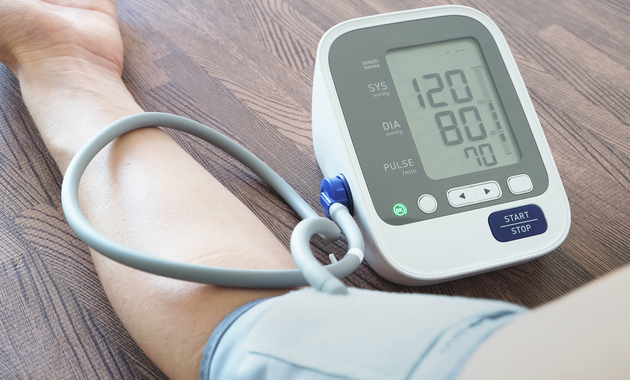
May 17th is observed as World Hypertension Day every year with the aim to raise awareness about high blood pressure.
Hypertension or high blood pressure is one of the common lifestyle disorders that is affecting millions of people worldwide. According to the National Family Health Survey in 2017, 207 million Indians (112 million men and 95 million women) suffer from hypertension[1]. While hypertension is considered to be a “silent killer” what is more deadly about the condition is the misconception related to high blood pressure.
So on this world hypertension day, we have asked Dr. Tilak Suvarna, Senior Interventional Cardiologist, Asian Heart Institute, Mumbai to debunk some of the common myths about hypertension and help us understand about the condition in a better way.
Myth 1: The symptoms of high blood pressure include headache, nervousness, sweating and trouble sleeping. If I don’t have these issues, it means I am fine.
Fact: It is one of the most common misconceptions that people have that I do not have any symptoms of hypertension, so I don’t have to get tested. However, it is very wrong because hypertension is known as a silent killer. In fact, in more than 90% of cases, people do not show any symptoms such as headache, giddiness, fatigue, or breathlessness. As high blood pressure doesn’t show any symptoms, it is advised that every individual should get their blood pressure regularly checked.
People who belong to high risk groups should get checked every 3 – 6 months and those who are above 30 years of age should get it checked every year.
People who fall under the high risk group are those who –
-Have a family history of blood pressure
-Are overweight or obese
-Have diabetes/heart disease
-Lead an inactive/sedentary lifestyle
-Suffer from stress
Get Your Blood Pressure Checked At Home By Digital BP Monitor. Buy NOW.
Myth 2: Hypertension is the disease of old people/ Hypertension occurs in old people.
Fact: Firstly, everyone needs to know that there are two types of hypertension — primary hypertension and secondary hypertension. Around 5% of patients with hypertension suffer from secondary hypertension in which there is a known cause for high blood pressure. These causes could be a kidney disease, adrenal gland disease, thyroid disease or an endocrine disease. These patients are usually very young (under 20 or even be teenagers). However, it is very rare.
But in 95% of the cases, there is no known cause of high blood pressure, which is known as primary hypertension. This is usually seen in young patients (30 years and above). Thanks to the modern lifestyle there is an increasing number of young adults who are at high risk of high blood pressure. And the three major reasons for this is stress, low physical activity and high intake of salt in the diet. This is why even people who are 30 years old should get their blood pressure checked on a regular basis.
Myth 3: High blood pressure runs in my family, so there is nothing I can do to prevent it.
Fact: There is no doubt that if you have a family history of hypertension, your risk also increases. But this doesn’t mean you cannot manage the condition. Let’s get to the basics to understand it in a better way. Any illness is a manifestation of genetic and environment factors. So if hypertension runs in your family, you will be susceptible to it but you can manage it by controlling the environmental factors such as stress, diet and lifestyle. Moreover, if you can control these factors you can even delay the onset of high blood pressure and also prevent its complications.
**Consult India’s best doctors here**
Myth 4: I don’t put extra salt, so I’m in control of my sodium intake and my blood pressure.
Fact: Although you may not add extra salt in your diet, what you are unaware is the fact that there are many hidden sources of salt in your daily diet. These hidden sources include processed foods, ready-to-eat foods, sauces, bread, cereals, noodles, bakery products, pickles, canned foods, chips, and cheese. So avoiding these foods can help you to cut down the salt intake and help in managing your blood pressure. Also, check food labels for ‘sodium content’ when buying packaged foods.
Myth 5: I use kosher or sea salt when I cook instead of regular table salt. So I don’t need to worry about my salt intake.
Fact: There is no conclusive evidence to prove that the so-called “low-sodium alternatives” such as kosher salt, pink salt, black salt or sea salt are safer than regular table salt. There the recommendation is to limit your salt intake. According to the World Health Organization (WHO), a healthy adult should not consume more than 5 gm of salt per day, which equals approximately a teaspoon of salt. Dr.Tilak Suvarna recommends that people with hypertension should consume less than this recommended dose, which can be around 2-4 gms (half a teaspoon) of salt per day.
(The article is reviewed by Dr. Swati Mishra, Medical Editor)
Recommended Reads:
10 Tips To Get Accurate Blood Pressure Readings At Home
Know Your Numbers: High Blood Pressure
References:
1. Gupta R, Gaur K, S Ram CV. Emerging trends in hypertension epidemiology in India. J Hum Hypertens. 2018 Sep 25.